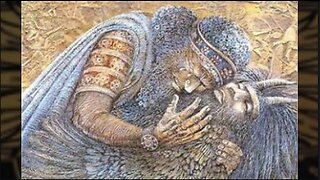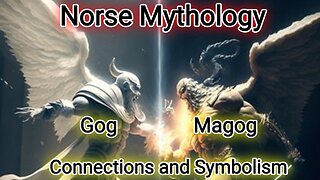Who Is Lilith, Folklore, Mythology or Did She She Just Not Fit The Biblical Narrative?
Lilith: Unraveling the Enigmatic Figure from Biblical and Mythological Perspectives
This article explores the controversial figure of Lilith, delving into her origins, portrayal in folklore and mythology, and the reasons behind her omission from the biblical narrative. Drawing upon an extensive analysis of ancient texts, scholarly interpretations, and cultural references, this research aims to shed light on Lilith's multifaceted nature and the historical contexts that shaped her image. Ultimately, it becomes apparent that Lilith's omission from the Bible can be attributed to various factors, including ideological considerations, shifts in religious beliefs, patriarchal influences, and the evolving nature of religious texts.
Lilith, a figure shrouded in mystery and controversy, has captivated the imaginations of scholars, theologians, and enthusiasts for centuries. Her absence from the canonical biblical narrative has sparked debates and raised questions about her origin, significance, and the reasons behind her exclusion. This Article aims to explore the multifaceted nature of Lilith, examining her presence in folklore and mythology, and investigating the factors that contributed to her omission from the Bible.
Origins of Lilith:
The origin of Lilith can be traced back to ancient Mesopotamian mythology, where she was depicted as a demoness or a seductress. The Sumerians and Babylonians believed in various female demons called "lilītu," which served as the foundation for the development of Lilith's character. Additionally, Lilith finds mention in Jewish mystical texts like the "Alphabet of Ben Sira" and the "Zohar," where she is portrayed as Adam's first wife, created as an equal rather than a subordinate.
Lilith in Folklore and Mythology:
Lilith's presence in folklore and mythology extends beyond her biblical origins. She is often depicted as a malevolent entity associated with nocturnal activities, fertility, and sexuality. In Jewish folklore, she is believed to be a seductress who preys on men and newborn infants. Furthermore, Lilith's image has been intertwined with various cultural and religious traditions, such as ancient Greek mythology, where she is associated with the vampire-like Lamia, and even in modern popular culture through literature, art, and music.
Omission from the Biblical Narrative:
The absence of Lilith from the biblical narrative has intrigued scholars and led to numerous theories. One reason often cited is the potential threat she posed to patriarchal ideologies. Lilith's depiction as an independent and assertive woman challenged traditional gender roles and may have clashed with the prevailing narrative of female subservience. Another possibility is that her exclusion was a result of deliberate editing and censorship by early religious authorities seeking to suppress alternative interpretations of creation and female empowerment.
Shifts in Religious Beliefs:
Lilith's omission from the Bible can also be attributed to shifts in religious beliefs and the development of monotheism. As ancient polytheistic religions gave way to monotheistic faiths like Judaism, Christianity, and Islam, the inclusion of multiple deities and mythological figures became increasingly problematic. Consequently, Lilith, considered a remnant of pagan beliefs, was marginalized and excluded from religious canonization.
Patriarchal Influences:
The rise of patriarchy within religious institutions likely played a significant role in Lilith's omission from the biblical narrative. As male religious authorities gained prominence, the portrayal of women in religious texts became increasingly subservient.
Conclusion:
Lilith, a complex figure with diverse cultural and mythological associations, was omitted from the biblical narrative due to ideological considerations, shifts in religious beliefs, and patriarchal influences. The enigma surrounding Lilith continues to captivate scholars and inspire interpretations in various disciplines.
-
 38:20
38:20
The Underground Man
8 months agoMesopotamian Mythology - Wisdom of The Ancients - Myths & Legends From Ancient Mesopotamia
215 -
 37:37
37:37
The Underground Man
8 months agoThe Underworld - World of The Dead In Various Cultures Religions & Myths
63 -
 3:25:10
3:25:10
31 Pearls
1 year agoOld Testament Legends - Full Book
88 -
 26:54
26:54
Awaken Bible Prophecy
10 months agoAwaken Bible Prophecy 7-12-23: The Harlot of Rome and Babylon
1.14K15 -
 45:49
45:49
The Underground Man
8 months agoSerpent Symbolism - Ancient Symbol of Good & Evil - In Various Cultures Religions & Myths
450 -
 2:17:46
2:17:46
KJBIBLE1611
10 months agoDan Barker / Thomas Ross Debate: The Old Testament, Fact or Fiction? (1 of 2)
802 -
 17:59
17:59
GoldenArrowFilms
1 year agoMystery of the Masks - Lilith, Spirit of Jezebel, Spirit of Wickedness
517 -
 1:14:31
1:14:31
The Underground Man
7 months agoMysteries of The Desert - Symbolism In Religion & Spirituality - Myths & Legends From The Desert
121 -
 4:46
4:46
The History Speaks (Books Reader)
9 months agoGog and Magog in Norse Mythology Connections and Symbolism
489 -
 11:50
11:50
CatholicReboot
6 months ago $0.05 earnedEpisode 1685: Books of the Bible - Judith
182